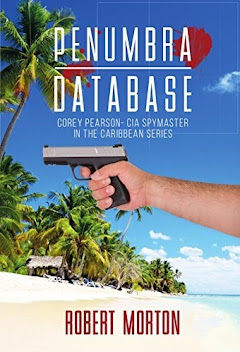 |
| The CIA Uses Palantir for Advanced Data Analysis and Threat Detection |
Palantir
isn’t your typical tech company. It doesn’t crank out gadgets, social media
platforms, or flashy apps. Instead, it builds something far more powerful:
software that can take a mountain of scattered information—phone records,
financial transactions, airline manifests, social media posts, criminal
databases, classified intel—and turn it into a clear picture of what’s really
going on behind the scenes.
For years, folks in U.S. intelligence have
leaned on Palantir to connect dots way faster than any human ever could. And
because it’s that powerful, people have called it everything from a
national-security lifesaver to “America’s most dangerous corporation.”
To see why, you have to look at what
Palantir actually does. Imagine a tool that grabs data from dozens of sources
that normally sit in separate silos—an FBI watchlist here, a DHS travel log
there, a snippet of CIA human intel on a classified server, and thousands of
scattered banking entries. Palantir pulls them all together.
Using it is like dumping ten different
puzzle boxes onto a table and somehow ending up with one big, clear picture. It
doesn’t make decisions for analysts, but it gives them something they never had
before—true visibility. Suddenly the networks, hidden links, odd timing
patterns, and buried red flags come into focus instead of staying lost across
systems that never talk to each other.
That’s why intel agencies swear by it. If
a suspect books a flight under a slightly tweaked name, pays through a shell
company tied to a hostile cyber actor, and then shows up in the corner of a
foreign surveillance video, Palantir is what pulls those clues together. Not
instantly or magically, but fast enough to matter.
A real example: After the Paris terror
attacks in 2015, analysts used Palantir to sift through travel records, phone
metadata, and financial transactions to map out the network behind the
attackers. It showed who was linked to whom and how they moved across Europe,
giving counterterror teams a head start they wouldn’t have had on their own.
And that’s the point. In
counterintelligence, time isn’t just important—it’s everything. Palantir
doesn’t hand you the answers, but it gets you close enough, fast enough, to
stop something before it happens.
Of course, power like this brings worries.
Civil-liberties groups fear that if Palantir can connect data this well, it
could be turned on regular people, creating a level of visibility that feels
too Big Brother for comfort. And they’re not wrong to watch it. When a private
company holds that much data and works with everyone from the CIA to local
police, transparency matters. The issue is, Palantir isn’t exactly known for
being open about how it all works.
But things get even more interesting when
you compare Palantir’s real-world abilities to the fictional tech in the Corey Pearson—CIA Spymaster Series.
In the novels, Corey and his team move through Washington, D.C. and foreign
hotspots while posing as everyday civilians—a wildlife photographer, a travel
agent, a cybersecurity contractor, a wedding-photographer couple, and a
wandering tech geek who looks harmless until he powers up his battlefield
tablet.
They go after enemies hiding inside
America’s institutions—people who rely on chaos created by scattered data. To
hunt them, Corey’s team uses tools that feel a lot like Palantir: fast,
powerful systems that can knit together intel from multiple agencies.
But unlike in the real world, where
Palantir gets side-eyed, the fictional version is used exactly as intended: as
a shield, not a weapon. Corey isn’t mapping the private lives of ordinary
Americans; he’s hunting threats planning to harm them. When a sleeper agent
moves money through an unregistered crypto wallet or a burner phone pings near
a secure site, Corey’s system flags it. The goal isn’t omniscience—it’s early
warning.
This is where fiction and reality meet. In
real intel work, you rarely get a perfect tip. You get scraps—half a name, a
maybe-wrong date, an unverified source, a money trail that stops too soon.
Palantir turns those scraps into something humans can actually use.
Corey’s team works the same way. They’re
not snooping on random people—they’re chasing the faint patterns terrorists
hope no one notices. That’s where the real threats live.
And that’s the tightrope with Palantir. A
tool this powerful can either protect a democracy or undermine it, depending on
how it’s used. Corey and his team use it the right way—they scrub innocent
names, shut down gray-area searches, and stay locked on real national-security
dangers. In the real world, keeping that discipline depends on oversight,
policy, and who’s in the driver’s seat.
So is Palantir the most dangerous company
in America? It depends on your angle. It’s definitely one of the most powerful.
But like any tool, everything hinges on who’s holding it. In the hands of
dedicated intel pros—real or fictional—it becomes what it was meant to be: a
shield against those hiding in the shadows.
The real question isn’t whether Palantir
is dangerous. It’s whether our institutions are strong enough to use it the way
Corey would—carefully, intelligently, and with protecting Americans front and
center.
Hopefully, Palantir will spy for
Americans, not on them.
Robert Morton is a member of the Association of
Former Intelligence Officers (AFIO) and writes about the U.S. Intelligence
Community (IC). He also writes the Corey
Pearson- CIA Spymaster Series, which blends his knowledge of real-life
intelligence operations with gripping fictional storytelling. His thrillers
reveal the shadowy world of covert missions and betrayal with striking realism.













